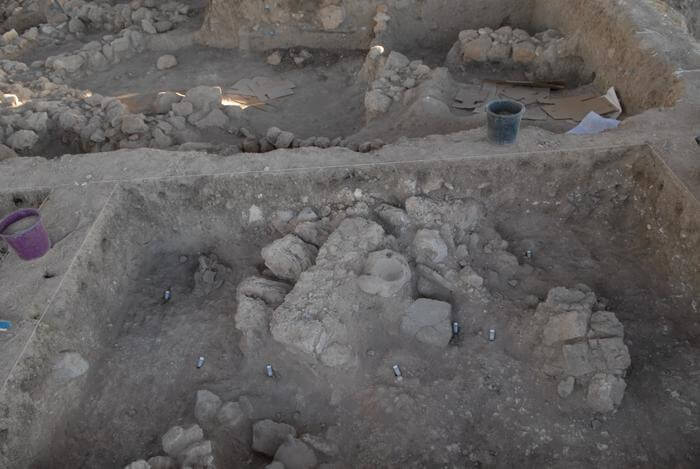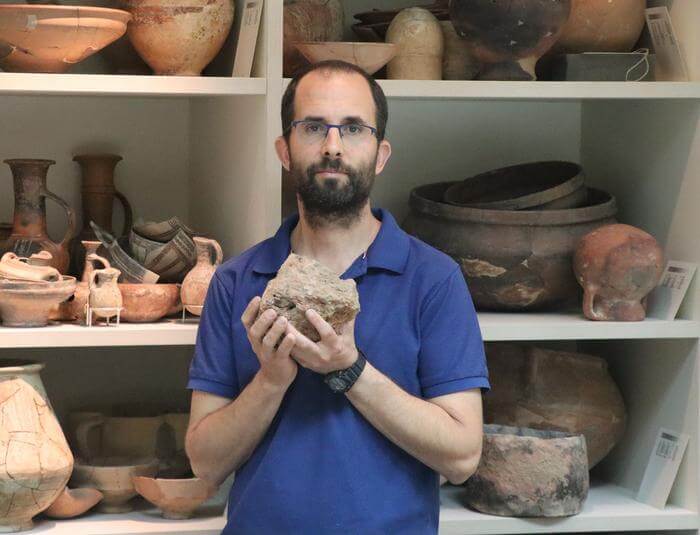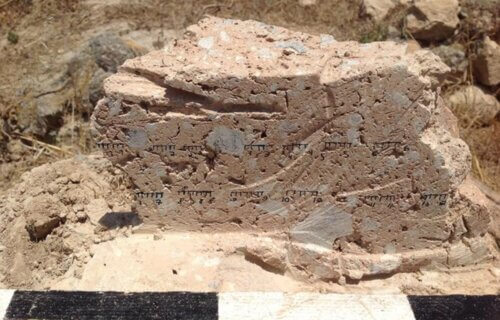TEL-AVIV, Israel — A team of researchers has scientifically confirmed an event written about in the Second Book of Kings – the conquest of the Philistine city of Gath by Hazael King of Aram. Israeli scientists made the historic discovery by measuring the magnetic field recorded in burnt bricks.
“Our findings are important for determining the intensity of the fire and the scope of destruction in Gath – the largest and most powerful city in the land at the time, and also for understanding construction practices in the region,” the research team explains in a media release.
The team from four Israeli universities – Tel Aviv University, The Hebrew University of Jerusalem, Bar-Ilan University, and Ariel University – add that the breakthrough promises to transform how archaeologists identify and interpret other burnt materials found in excavations. This innovative method can accurately estimate the firing temperatures of materials such as mud bricks, a common find in archaeological sites.
The study was led by Dr. Yoav Vaknin from Tel Aviv University and included contributions from experts in various fields. The team’s new method, recently published in the scientific journal PLOS ONE, can detect whether an item was exposed to a firing event at relatively low temperatures, starting from 200°C (392°F). This is crucial for archaeologists to understand the history and context of their findings accurately.
“Throughout the Bronze and Iron Ages the main building material in most parts of the Land of Israel was mud bricks. This cheap and readily available material was used to build walls in most buildings, sometimes on top of stone foundations. That’s why it’s so important to understand the technology used in making these bricks,” notes Prof. Oded Lipschits of Tel Aviv University.
The new method hinges on measuring the magnetic field recorded in the bricks as they were burnt and cooled down. Dr. Vaknin elaborates that clay bricks contain ferromagnetic particles, which act like tiny magnets. Normally, in a sun-dried brick, these magnets are randomly oriented and cancel each other out, leading to a weak magnetic signal. However, when heated to 200°C or more, as in a fire, these particles align with the Earth’s magnetic field. This alignment remains even after the brick cools, providing a strong and uniform magnetic signal that can be measured.

To determine the original firing temperature of a brick, the researchers employ a process called thermal demagnetization. This technique involves gradually erasing the brick’s magnetic field by heating it in controlled conditions and measuring the remaining magnetic signal at each step. The temperature at which the magnetic field is fully erased indicates the temperature at which the brick was originally fired.
This method has proven effective in laboratory tests and offers a more sensitive approach to identifying burnt materials than previous techniques, which generally required higher temperatures to detect changes in minerals.
One of the most significant applications of this method was at the archaeological site of Tell es-Safi, identified as the ancient Philistine city of Gath. The site was the center of a debate regarding the destruction of a brick structure. Using their method, the researchers confirmed that the magnetic fields of all bricks and debris from the site had the same orientation – north and downward. This finding supports the hypothesis that the structure was destroyed by fire, possibly relating to the Biblical account of King Hazael of Aram’s attack on Gath.
“Our findings signify that the bricks burned and cooled down in-situ, right where they were found, namely in a conflagration in the structure itself, which collapsed within a few hours. Had the bricks been fired in a kiln and then laid in the wall, their magnetic orientations would have been random. Moreover, had the structure collapsed over time, not in a single fire event, the collapsed debris would have displayed random magnetic orientations,” Dr. Vaknin says.
“We believe that the main reason for our colleagues’ mistaken interpretation was their inability to identify burning at temperatures below 500°C. Since heat rises, materials at the bottom of the building burned at relatively low temperatures, below 400°C, and consequently the former study did not identify them as burnt – leading to the conclusion that the building had not been destroyed by fire. At the same time, bricks in upper parts of the wall, where temperatures were much higher, underwent mineralogical changes and were therefore identified as burnt – leading the researchers to conclude that they had been fired in a kiln prior to construction. Our method allowed us to determine that all bricks in both the wall and debris had burned during the conflagration: those at the bottom burned at relatively low temperatures, and those that were found in higher layers or had fallen from the top –at temperatures higher than 600°C.”

“Our findings are very important for deciphering the intensity of the fire and scope of destruction at Gath, the largest and most powerful city in the Land of Israel at the time, as well as understanding the building methods prevailing in that era. It’s important to review conclusions from previous studies, and sometimes even refute former interpretations, even if they came from your own school,” adds Prof. Aren Maeir from the Martin (Szusz) Department of Land of Israel Studies and Archaeology at Bar-Ilan University.
“Beyond their historical and archaeological significance, ancient building methods also had substantial ecological implications. The brick firing technology requires vast quantities of combustive materials, and in ancient times this might have led to vast deforestation and even loss of tree species in the area. For example, certain species of trees and shrubs exploited by the ancient copper industry in the Timna Valley have not recovered to this day and the industry itself ultimately collapsed once it had used up its natural fuels. Our findings indicate that the brick firing technology was probably not practiced in the Land of Israel in the times of the Kings of Judah and Israel,” concludes Prof. Erez Ben-Yosef from the Sonia & Marco Nadler Institute of Archaeology at Tel Aviv University.
You might also be interested in:
- 3,000-year-old piece of fabric found in Israel matches description of royal purple in the Bible
- O Holy Find: Mysterious fruit revealed as oldest fossil in frankincense and myrrh family
- Ancient Roman temple unearthed, writing new chapter in story of Christianity’s rise

